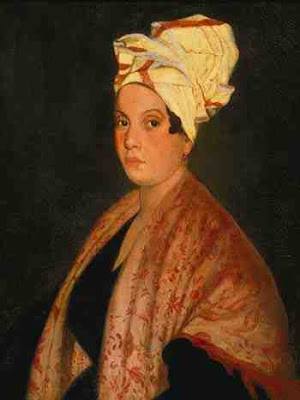Out of Africa: Early Humans
Studying Evolution: Mini-Essays and Sub-sections
Evolutionary Psychology
8 -- Human Evolution Made Easy
- 8 - Human Evolution Made Easy
- 9 - Human Ancestry Made Easy
- Evolution Primer #5: Did Humans Evolve?
- Carl Sagan - Pale Blue Dot
- Carl Sagan "Pale Blue Dot" (New Version)
Human Evolution News
- Out of Africa: The Real Eve
The greatest journey ever undertaken left behind a trail of unanswered questions: How did our species arise and spread around the globe to become the most dominant creature on the planet?
- The Human Family Tree
The Human Family Tree retraces the deepest branches of the human race to reveal interconnected stories hidden in our genes - using diverse neighbors from a single street who represent a microcosm of the world.
- Journey of Man: A Genetic Odyssey
The Journey of Man is a documentary that talks about our evolution, our recent history, and how we came to be to the way we are today. It looks at the Y chromosome, that's passed down from male to male, and tracks the marker mutations to map our ancestors' journey. It's how we conquered the Earth in just the last 59,000 years.
- Journey of Mankind
The Bradshaw Foundation, in association with Stephen Oppenheimer, presents a virtual global journey of modern man over the last 160,000 years.
All Non-Africans Part Neanderthal, Genetics Confirm
Wednesday, July 20, 2011
Human DNA 97% Same as Orangutans
Thursday, January 27, 2011
Lost Civilization Under Persian Gulf?
Friday, December 10, 2010
Modern Humans Mature More Slowly Than Neanderthals Did, Analysis of Teeth Suggests
Monday, November 15, 2010
First humans arrived in Britain 250,000 years earlier than thought
Thursday, July 8, 2010
New Pre-Human Species Offers Evolutionary Clues
Thursday, April 8, 2010
Missing link between man and apes found
Saturday, April 3, 2010
DNA identifies new ancient human dubbed 'X-woman'
Wednesday, March 24, 2010
A skull that rewrites the history of man
Wednesday, September 9, 2009
Scientists Unveil Missing Link In Evolution
Tuesday, May 19, 2009
African tribe populated rest of the world
Saturday, May 9, 2009
Study shows 28,000-year-old Europeans' DNA was like ours
Thursday, July 17, 2008
Humans lived in tiny, separate bands for 100,000 years
Friday, April 25, 2008
Study says near extinction threatened people
Friday, April 25, 2008
Gene studies confirm 'out of Africa' theories
Thursday, February 21, 2008
Advanced Russian civilization found
Friday, December 28, 2007
Neanderthals trekked all the way into Siberia
Wednesday, October 3, 2007
Row sparked by US tour of 3.2m-year-old Lucy skeleton
Tuesday, August 7, 2007
Egyptians, not Greeks were true fathers of medicine
Monday, May 14, 2007
DNA shows Aborigines descended from Africans
Wednesday, May 9, 2007
Scientists find first known human ritual
Thursday, November 30, 2006
Genetic breakthrough that reveals the differences between humans
Thursday, November 23, 2006
'Lucy's baby' found in Ethiopia
Wednesday, September 20, 2006
Ancient Tomb Sheds New Light On Egyptian Colonialism
Wednesday, May 17, 2006
Anthropologists Discover A 'Missing Link'
Thursday, April 13, 2006
Stone age man used dentist drill
Friday, April 7, 2006
Clues to origin of Chinese characters
Thursday, March 23, 2006
Scientists find gene that affects skin color
Friday, December 16, 2005
Bio-archaeologists pinpoint oldest northern European human activity
Thursday, December 15, 2005
Humans in England May Go Back 700,000 Years
Wednesday, December 14, 2005
Ancient humans brought bottle gourds to the Americas from Asia
Wednesday, December 14, 2005
Skulls in South America Tell New Migration Tale
Monday, December 12, 2005
Earliest European Farmers Left Little Genetic Mark On Modern Europe
Saturday, November 12, 2005
Human genetic diversity supports 'Out of Africa' model
Tuesday, October 18, 2005
Unexpected Stone Age Find in South Africa
Friday, September 2, 2005
400,000-year-old stone tools discovered in Mazandaran
Thursday, June 9, 2005
Chinese come from Africa, just like the rest of us
Thursday, May 12, 2005
New Species of Tiny Humans Were Smart, Brain Study Reveals
Saturday, March 5, 2005
Origins of modern humans pushed back
Wednesday, February 16, 2005
Ethiopian fossils show our ancestors stepped out 4.5m years ago
Thursday, January 20, 2005
Scientists find possible ancestor common to humans, great apes
Thursday, November 18, 2004
Tiny new species of human unearthed
Wednesday, October 27, 2004
Growth Study Of Wild Chimpanzees Challenges Assumptions About Early Humans
Thursday, July 15, 2004
Longevity Evolved Late For Humans
Tuesday, July 6, 2004
Chimps Belong on Human Branch of Family Tree, Study Says
Thursday, May 20, 2004
Oldest human jewelery found in Africa
Monday, April 19, 2004
Fins to Limbs: New Fossil Gives Evolution Insight
Thursday, April 1, 2004
6-Million-Year-Old Hominid
Thursday, March 4, 2004
Difference Between Humans And Primates
Wednesday, February 25, 2004
New Study Shows Neanderthals Were Not Our Ancestors
Tuesday, January 27, 2004
'New World' link to Arctic find
Friday, January 2, 2004
The Earliest Known Relative Of Marsupial Mammals
Thursday, December 11, 2003
A Window On Africa's "Missing Years"
Wednesday, December 3, 2003
Baboon Studies and Complex Social Societies
Friday, November 21, 2003
Research Sheds New Light On Process Of Evolution
Tuesday, November 18, 2003
Stone Tool And Bone Find Earliest Ever Excavated
Wednesday, November 5, 2003
Humans Sped to U.K. After Ice Age, Study Says
Monday, November 3, 2003
Discovery in Ethiopia sheds new light on history of man
Wednesday, October 22, 2003
Evolutionary origins of laughter
Tuesday, October 7, 2003
Head lice key to clothing history
Monday, September 29, 2003
Neanderthals, Cro-Magnon hunted same prey
Monday, September 22, 2003
Earliest Modern Humans Found in Romanian Cave
Monday, September 22, 2003
When did we start talking?
Thursday, August 7, 2003
Early Hominids May Have Behaved More 'Human'
Thursday, August 7, 2003
Out of Africa
Wednesday, July 9, 2003
Regarding Neandertal Facial Length
Tuesday, June 17, 2003
Oldest 'modern' human skulls found in Africa
Wednesday, June 11, 2003
When humans faced extinction
Monday, June 9, 2003
Migration Of Modern Humans
Wednesday, May 28, 2003
'Oldest sculpture' found in Morocco
Friday, May 23, 2003
Race: The Power of an Illusion
Tuesday, May 13, 2003
Study: Human DNA Neanderthal-Free
Monday, May 12, 2003
Study Discovers Key To Baby-like Skin
Wednesday, May 7, 2003
Stone Toolmaking Also Done By Women
Monday, April 7, 2003
Flat-faced Man in family feud
Friday, March 28, 2003
Chimpanzees With Little Or No Human Contact Found
Friday, March 14, 2003
Oldest human footprints found
Wednesday, March 12, 2003
A New Way To Compare Genomes
Friday, February 28, 2003
Clovis People Acquitted Of Ancient Killings
Tuesday, February 25, 2003
New Age For Mungo Man, New Human History
Thursday, February 20, 2003
Is race only skin-deep?
Sunday, February 9, 2003
Earliest Fossil Evidence Of Differences Between Sexes
Thursday, January 23, 2003
Ape culture hints at earlier evolution
Thursday, January 2, 2003
Cloned animals don't look alike
Saturday, December 28, 2002
Assimilation of Archaic Humans into Modern Human Populations
Thursday, December 26, 2002
Fresh debate over human origins
Tuesday, December 24, 2002
Fossils may be 'first Europeans'
Monday, December 23, 2002
Gene Study Identifies 5 Main Human Populations
Friday, December 20, 2002
Sea Squirt DNA Sheds Light On Vertebrate Evolution
Friday, December 13, 2002
An Ancient Link to Africa Lives on in Bay of Bengal
Wednesday, December 11, 2002
New Theory For Origins Of Life On Earth
Wednesday, December 4, 2002
Human skulls are 'oldest Americans'
Tuesday, December 3, 2002
Secrets Of Feather Formation
Thursday, October 31, 2002
Overlapping Genetic and Archaeological Evidence Suggests Neolithic Migration
Wednesday, September 11, 2002
Human-Specific Variety Developed When Humans, Chimps Diverged
Friday, August 2, 2002
Is Crawling babies Overrated?
Tuesday, July 30, 2002
Third and Smallest Skull Of "First Eurasians"
Friday, July 5, 2002
Genetic roots of Europe
Tuesday, June 25, 2002
Neanderthal clues from mammoth find
Tuesday, June 25, 2002
Prehistoric Human Footpaths Lure Archaeologists Back To Costa Rica
Thursday, May 23, 2002Extract: Inbreeding, Incest, and the Incest Taboo: The State of Knowledge at the Turn of the Century by Arthur P. Wolf and William H. Durham (Nov 1, 2004)



%3B+Barbados+Museum..jpg)





















































